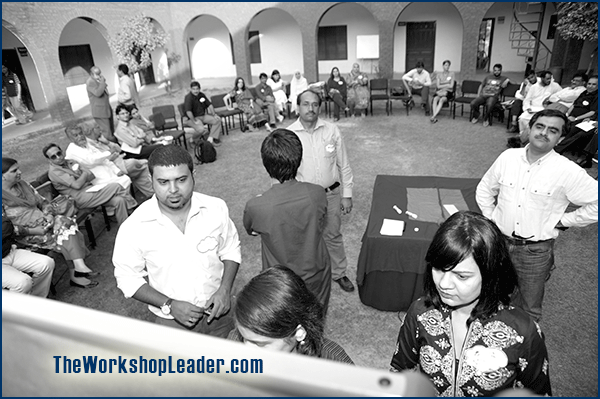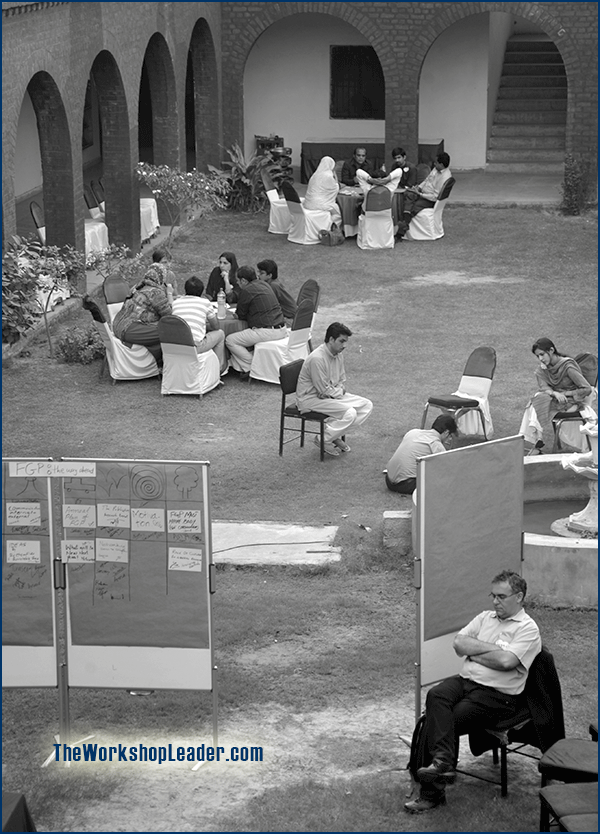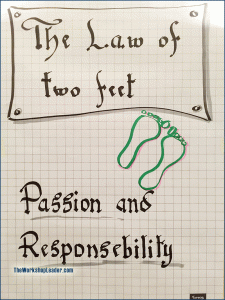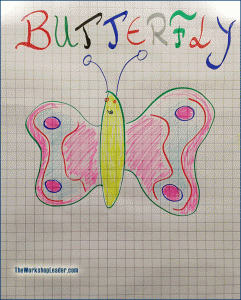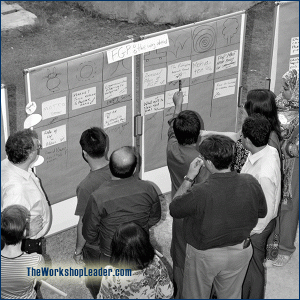The aim of argument, or of discussion, should not be victory, but progress.
Joseph Joubert (1754—1824)
French writer
Open Space Technology (OST) is a group facilitation technique for a larger amount of people (min. 35). It’s very dynamic. Despite its freedom in the execution participants work very disciplined by themselves – with outstanding results. However, the minimum time to plan is half a day (about 4 hours).
Why Open Space Technology?
What’s the best part of conferences and congresses? The tea breaks, naturally! Why? Because you talk to people you want to talk to and about the topic you want to talk about. If you have chatted enough you leave and go to another group of people standing there in discussion. Open Space Technology (OST) is a moderation method for large groups and is focused around this idea. The American author, academic and photographer Harrison Owen (*1935) developed it in 1992. Since then it has become very popular worldwide.
Though this methodology allows complete freedom for the participants, I have never seen people working in a more concentrated fashion. Furthermore, Open Space offers a market of ideas and evolves according to supply and demand. This together makes it the primary tool for a participatory way of leadership! So, let’s have a look:
The topic of the Open Space Session can be left open, or you give a very broad topic, which gives people enough freedom to introduce their own ideas. You could use it for few hours or even several days. The size is not limited: from experience it works best with at least 25 people.
How to go about it?
The moderator introduces the methods to participants. This takes about 20 minutes. He or she has to explain the following:
This is a completely free method. You are free to suggest topics of discussion and free to move. There are only two constraints:
- The start and end times of the session have to be defined.
- The one who suggests a topic is the moderator of the session. He/she has to stay in his discussion circle.
Open the marketplace of ideas: let people suggest topics they want to talk about by writing them on cards (including the name of the originator). As a moderator you organise the ideas in a time/room matrix, which you have prepared in advance. Give the rooms or areas easy-to-understand names like animal names or cities. Before starting make sure the participants know where these areas are.
You will also need to explain the following laws and principles:
The Law of Two Feet
The Law of Two Feet means that everybody can go to any session to contribute or learn whenever he wants to. You take full responsibility for your own decision where you want to be. Usually two types of character emerge:
- Bumblebees: participants who contribute to a discussion and who leave in order to contribute to another group.
- Butterflies: participants who don’t contribute but it’s nice to have them around.
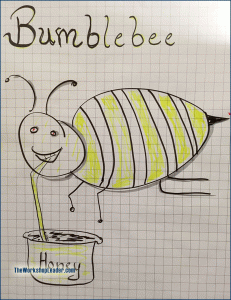
Four Principles
There are Four Principles to accept in order to make it a success:
The result should be presented by the moderator of each topic. Furthermore, it is useful to hang up the flip-chart papers or board papers with the contents of each discussion, so that everyone can see and read about it at a later stage.
A follow-up is likely to evolve. To make sure this happens, assign appropriate responsibilities.
Preparation of Open Space Technology
Ensuring success, this exercise requires a little bit of preparation (a minimum of 30—45 minutes). You will need a room or rooms big enough to accommodate all the participants. In a big room or open area you can mark distinct areas. In a hotel you can ask for different conference rooms or define areas in a big hall. You need:
- Flip charts / boards according to the number of groups and depending on the overall number of participants.
- Markers and cards for discussion suggestions.
- A room-time-matrix to organise the ideas.
- Signs or cards to mark the rooms.


